The 1959 Junior World Series
This article was written by Matt Clever
This article was published in When Minor League Baseball Almost Went Bust: 1946-1963
Minneapolis Millers manager Gene Mauch is shown, front and center, with Fidel Castro, president of Cuba, during the 1959 Little World Series in Havana, Cuba. The series pitted the International League champion, the Havana Sugar Kings, against the American Association Millers. (SABR-Rucker-Archive)
The 1959 season was the 44th in which the Junior World Series (called the Little World Series until 1932) represented the pinnacle of Triple-A ball, pitting the winners of the International League (which covered the East Coast from Canada to the Caribbean) against the best that the American Association (spanning the Midwest and Rocky Mountains) had to offer.
The Minneapolis Millers emerged as the American Association champs for the second straight year under manager Gene Mauch. Though they finished two games behind Louisville in the regular season, the Millers caught fire in the playoffs thanks to the red-hot bat of 20-year-old second baseman Carl Yastrzemski. The Boston Red Sox had promoted Yastrzemski to Triple A just in time for the playoffs, after a regular season that saw him hit .377 in the Carolina League.
The Havana Sugar Kings likewise did not finish in first place during the International League season. But they swept the Columbus Jets in the first round and then won four one-run games over the Richmond Virginians to clinch the IL crown (known as the Governors’ Cup). A farm club of the Cincinnati Reds, the Sugar Kings featured notable Cubans including Leo Cardenas, Tony Gonzalez, Mike Cuellar, and Cookie Rojas, as well as manager Preston Gomez.
Cuba for much of the 1950s was a popular vacation destination for Americans. Its capital city, Havana, was described by the travel magazine Cabaret Quarterly in 1956 as “a mistress of pleasure, the lush and opulent goddess of delights.” In other words: “Havana then was what Las Vegas has become.”1 But by 1959 a communist revolution led by Fidel Castro had unseated the country’s president/dictator, Fulgencio Batista.
The situation improved from all-out guerrilla warfare to a nonviolent but combustible tension after Castro named himself prime minister in February. Armed revolutionaries still patrolled Havana’s streets. On July 26 two bullets, fired in celebration of the six-year anniversary of the revolution’s beginning, flew into the ballpark (which in 2024 was still standing, renamed Estadio Latinoamericano) during a Sugar Kings home game, hitting Cardenas and Rochester Red Wings coach Frank Verdi. Neither was seriously wounded, but the incident made other IL clubs reluctant to come to the island. The Sugar Kings survived largely because of the intervention of Castro, a huge fan of the game and promoter of the team.2
The series opened at the Millers’ home ballpark, Metropolitan Stadium in Bloomington, Minnesota, on Sunday, September 27. A chilly drizzle kept all but 2,486 of the hardiest fans at home, and many of those who showed up were Cuban-Americans who brought flags and maracas to loudly root for the visitors. Havana rode a four-run third inning to a 5-2 victory.
The next morning brought a wintry freeze, so barely 1,000 were in attendance for Game Two. They saw the Millers erase a 2-0 deficit on a two-run homer off the bat of Roy Smalley (the brother-in-law of manager Mauch, and the father of Roy Smalley who later played in the same stadium as a Minnesota Twin).3 The Sugar Kings took a 5-2 lead; the Millers erased it again on homers by Lou Clinton and Red Robbins. It was still knotted 5-5 when Millers catcher Ed Sadowski led off the bottom of the ninth with a home run to win the game and even up the series.
The biggest story of the first two days was the cold. The Sugar Kings especially were not accustomed to it, and sought to combat it by consuming large quantities of coffee. During Game Two they built a fire in a trash can in their dugout to provide some heat.4 Game Three was scheduled to be played in Minnesota too, but as the mercury in the thermometers continued to drop, the decision was made (by the commission that governed the minor leagues) to shift the rest of the Series to Havana, where the weather would be more hospitable.5
Upon arrival both teams enjoyed a splendid parade from the airport to Havana’s city hall. A sellout crowd of 25,000 jammed Estadio Latinoamericano for Game Three, including Castro and many of his lieutenants. After landing on the field in a military helicopter, Castro addressed the handkerchief-waving fans, telling them (in Spanish): “I come here not as prime minister but as a lover of baseball. I want to see our club win. After the triumph of the revolution, we should win the Little World Series also.”6
Castro’s bearded soldiers made themselves a visible presence throughout the game, occasionally taking seats right next to the players in the dugouts. Teenage soldiers barely even old enough to grow beards were “waving their guns around like toys,” said Millers pitcher Ted Bowsfield.7 His teammate Tom Umphlett remembered returning to the bench after catching the final out of an inning, and being greeted by a soldier who made a threatening slicing motion across his throat.8
Yastrzemski, who homered to give Minneapolis an early lead in Game Three, would later write in his autobiography: “We were warned not to leave the [Havana Hilton] hotel between games… with the guns and the noise, it was scary.”9
“Our players were truly fearful of what might happen if we won,” said Mauch.10 This was the atmosphere in which the Millers blew a late lead and lost 3-2 in 10 innings.
Game Four followed a similar script. Havana native Daniel Morejon of the Sugar Kings ripped an RBI single in the bottom of the ninth to tie the game, then did the same thing in the 11th to put the Sugar Kings one win away from the championship. But the Millers took their cues from Mauch, who snarled, “We still tried our hardest, figuring we’d take our chances if we did win.”11 They took Game Five 4-2, and Game Six 5-3, setting the stage for a decisive Game Seven on Sunday, October 4—the same day the Los Angeles Dodgers hosted the first World Series game in California, and a Soviet spacecraft’s camera gave humanity its first look at the dark side of the moon.
Displaying a revolver on his hip, Castro strolled through the Minneapolis bullpen before Game Seven and said to the pitchers, “Tonight we win.”12 The Millers made Castro sweat in the 90-degree heat, as they jumped in front 1-0 on a home run by utility infielder Joe Macko.13 Lou Clinton’s second homer of the series, leading off the sixth, made it 2-0, Minneapolis. But just as they had done several times before, the Sugar Kings came back. Elio Chacon singled to open the bottom of the eighth. With one out, Morejon dropped a ground-rule double just inside the right-field line, putting runners on second and third. With two out, pinch-hitter Larry Novak came through with a two-run single to tie the score. And so the 1959 Junior World Series would go right down to the wire. Apparently, Morejon was destined to be the hero. His clean single up the middle with two out in the ninth knocked in the series-winning run for Havana. Pitcher Raul Sanchez slid safely into home plate a half-second before Umphlett’s throw. A short, grainy video of the moment still exists.14
All of Cuba celebrated the Sugar Kings’ victory. Many guns were fired into the air. As for the Millers? They were “happy to get it over with and get out of there with [their] hides,” according to Bowsfield.15
Sadly, affiliated baseball would not survive in communist Cuba. Partway through the 1960 season, the Sugar Kings were compelled to relocate to Jersey City, New Jersey. For the remainder of the twentieth century, baseball-crazed Cubans had to get their fix from afar (or by watching their poorly paid countrymen play on teams approved by Castro’s government). The Millers would play one more year at Metropolitan Stadium (during which Yastrzemski learned to be an outfielder) before the big-league Twins came to town in 1961. Both clubs are remembered for their roles in the 1959 Junior World Series— a truly unique episode in baseball history.
MATT CLEVER retired from the Air Force to become a land surveyor in his native Pennsylvania. A member of SABR since the 1990s, he has contributed to publications including The Glorious Beaneaters (2019); Whales, Terriers, and Terrapins (2020); The Pride of Smoketown (2020); and Baltimore Baseball (2021). Matt lives with his teenage son, Trey (who, sadly, cannot understand his father’s obsession), and two old cats named Utley and Rollins.
Sources
In addition to the sources cited in the Notes, the author also consulted baseball-reference.com and the following:
Briere, Tom. “Millers Win 6-5, Tie Havana Series,” Minneapolis Tribune, September 29, 1959: Si.
Thornley, Stew. On to Nicollet: The Glory and Fame of the Minneapolis Millers (Minneapolis: Nodin Press, 1988).
Notes
1 Natasha Gelling. “Before the Revolution,” Smithsonian, July 31, 2007, https://www.smithsonianmag.com/history/before-the-revolution-159682020/
2 Tyler Maun. “The Minor Leagues’ Last Nights in Havana,” milb.com, March 26, 2020, https://www.milb.com/news/minor-league-baseball-left-cuba-after-revolutionary-uncertainty-219279574
3 The elder Smalley was the brother-in-law of manager Mauch, and father of the Roy Smalley, Jr., who later played in the same stadium as a Minnesota Twin, from June of 1976 through the 1981 season.
4 “Chilled Cubans Thaw on Java,” The Sporting News, October 7, 1959: 30.
5 Bob Beebe, “Junior Series Moved to Havana Because of Weather,” Minneapolis Star, September 29, 1959: 11B.
6 Bill Madden, “Orioles’ Cuba Trip Opens Old Wounds,” New York Daily News, March 28, 1999: 92.
7 Stew Thornley, “Minneapolis Millers—1959 Junior World Series vs. Havana,” at http://www.stewthornley.net/millers_havana.html
8 Thornley.
9 Carl Yastrzemski and Gerald Eskenazi, Yaz: Baseball, The Wall, and Me (New York: Doubleday Books, 1990), 51.
10 Thornley.
11 Thornley.
12 Letter from Millers pitcher Stu “Lefty” Locklin to Stew Thornley, March 1984.
13 Thornley.
14 “Junior World Series I959.mp4.” YouTube.com, uploaded by cbrioso23. https://www.youtube.com/watch?v=WJAehLwu2aw.
15 Thornley.


